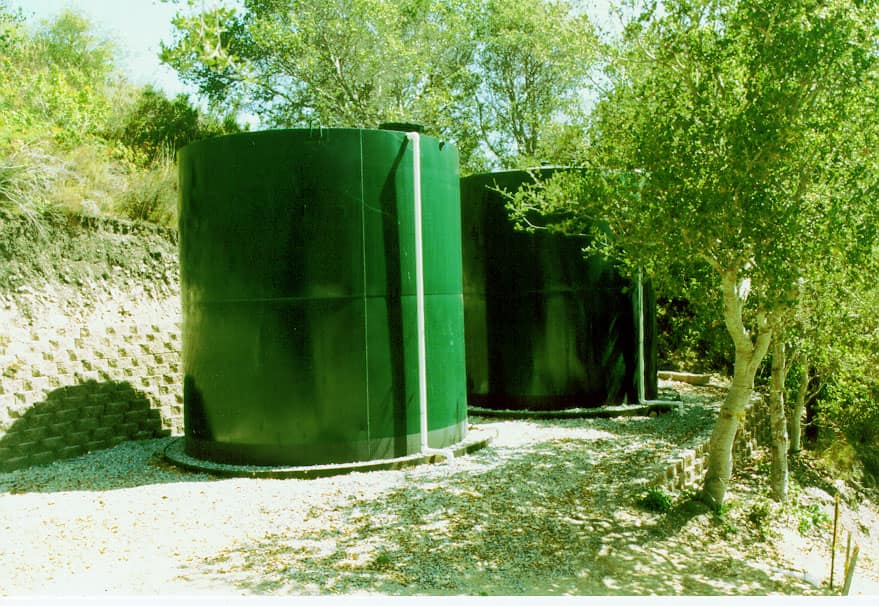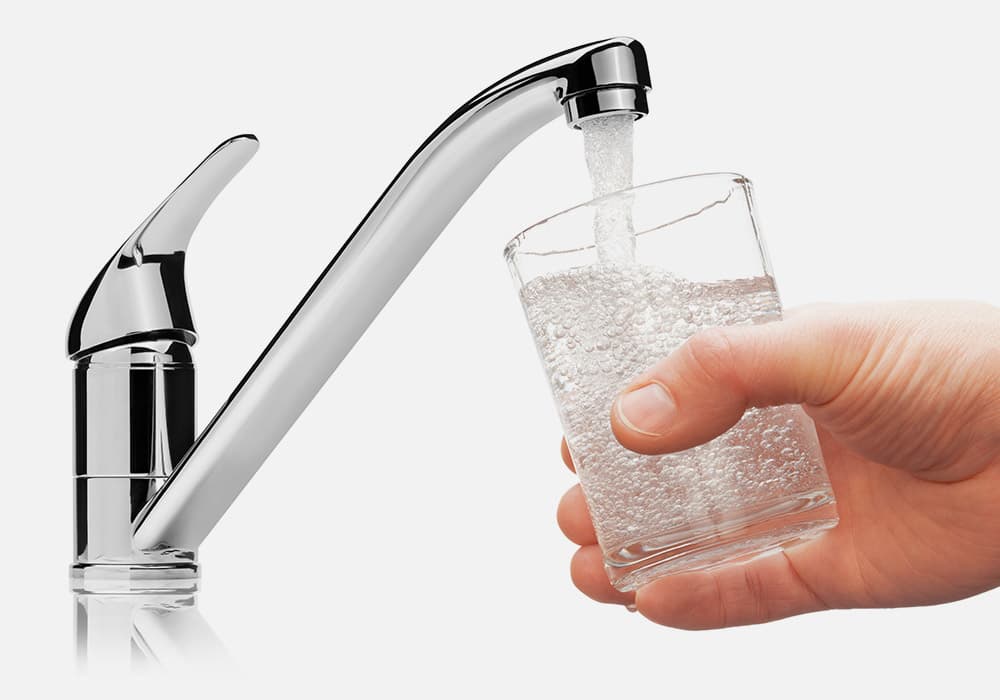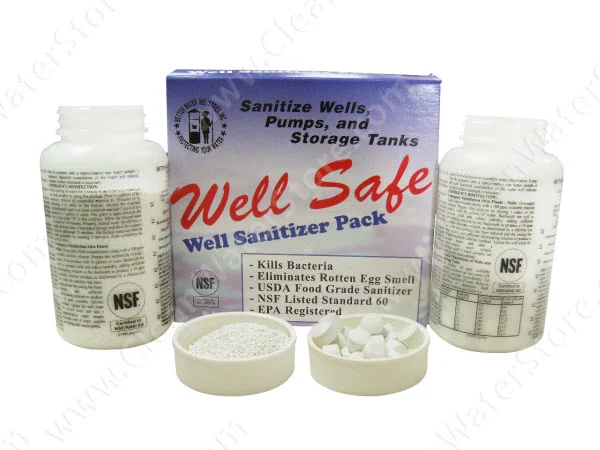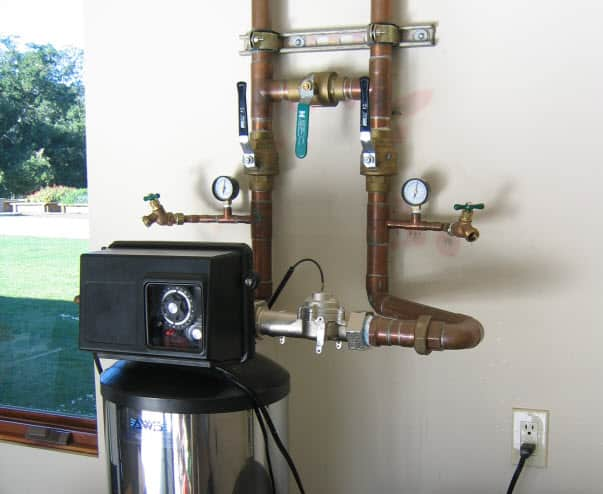How to Read Your Water Test Report
Understanding Your Well Water Test Report
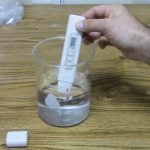 How to read your water test report? Since you are using well water at home, it's important to know what's in your water. To use the chart best, it helps to know some key terms it mentions.
How to read your water test report? Since you are using well water at home, it's important to know what's in your water. To use the chart best, it helps to know some key terms it mentions.
Alkalinity
Alkalinity measures the water's capacity to neutralize acids, a critical factor in maintaining stable pH levels and water quality. It is primarily due to the presence of bicarbonates, carbonates, and in some cases, hydroxides. Expressed in milligrams per liter (mg/L) as calcium carbonate (CaCO3), alkalinity acts as a buffer, preventing drastic pH changes that could harm aquatic life, corrode plumbing, or affect the water's taste and odor.
High alkalinity water (greater than 150 mg/L) might lead to scaling, while water with low alkalinity (less than 150 mg/L) can be corrosive.
Understanding the alkalinity of your well water is essential for choosing the appropriate treatment solutions to protect your plumbing and ensure water quality.Water with less than 150 mg/L of alkalinity can be corrosive. On the other hand, high alkalinity water (greater than 150 mg/L) might lead to scaling. It's crucial to note that alkalinity, which measures water's ability to neutralize acids, is not the same as pH.
pH
Refers to “Potential Hydrogen”
pH in well water is a critical measure indicating the acidity or alkalinity of the water. The pH scale ranges from 0 to 14, with 7 being neutral.
Values below 7 indicate acidic water, while values above 7 show alkalinity. The pH level of well water affects not only the water's aesthetic qualities, such as taste and color, but also its corrosiveness and ability to dissolve minerals and metals from pipes and fixtures.
This can lead to metal leaching, which may introduce harmful levels of lead, copper, or other metals into the water supply. Furthermore, the effectiveness of water treatment processes, such as disinfection, can be influenced by the water's pH. Maintaining a balanced pH in well water is essential for ensuring the safety and quality of the water, making it suitable for drinking, cooking, and other household uses.
Iron
Iron in well water is a common issue that can affect both the quality and aesthetics of your water supply. The maximum level recommended to prevent staining is 0.3 mg/L (PPM).
It is typically found in two forms: soluble ferrous iron (Fe2+), which is clear and dissolved in water, and insoluble ferric iron (Fe3+), which gives water a reddish or orange tint.
While iron itself is not harmful to health at the concentrations usually found in well water, it can cause several problems. High levels of iron can lead to staining on plumbing fixtures, laundry, and dishes, imparting a metallic taste to the water and potentially promoting the growth of iron bacteria. These bacteria can form slimy deposits in plumbing and impart an unpleasant taste and odor to the water.
The presence of iron in well water can be managed through various treatment methods, such as oxidation followed by filtration to remove insoluble iron particles, or ion exchange. Addressing iron in well water not only improves the water's taste and appearance but also prevents staining and the potential for bacterial growth, ensuring a cleaner, more pleasant water supply for household use.
Manganese
A level above 0.05 ppm of manganese can lead to brown or black staining on fixtures and laundry. It can also result in deposits within pipes and fixtures.
Manganese in well water is a common mineral that, similar to iron, can impact water quality and aesthetics. It typically appears in water in two forms: soluble, when the water is clear (manganous manganese), and insoluble, when it causes the water to have a black to purple color (manganic manganese).
Although manganese is an essential nutrient and required by the human body in small amounts, excessive levels in water can lead to aesthetic and health concerns.
High concentrations of manganese in well water can result in black staining on plumbing fixtures and laundry, which is more difficult to remove than iron stains. It can also impart a metallic taste to the water, making it unpleasant to drink. Beyond aesthetics, prolonged consumption of water with high levels of manganese has been associated with health issues, particularly neurological problems.
Hardness
Water hardness is primarily due to calcium. A reading less than 8 grains per gallon (gpg) is generally acceptable. Water between 0 to 3 gpg is considered soft, while over 8 to 10 gpg indicates hard water. Hard water can lead to white spots on fixtures and scale buildup in pipes and water heaters.
Water hardness in well water refers to the concentration of dissolved minerals, primarily calcium and magnesium, in the water. It is measured in grains per gallon (gpg) or milligrams per liter (mg/L), also expressed as parts per million (ppm). Water is considered soft at 0-3 gpg, moderately hard at 3-7 gpg, hard at 8-10 gpg, and very hard at over 10 gpg.
Hard water can lead to several practical problems in household use. It reduces the lathering ability of soaps and detergents, resulting in less effective cleaning and the need for more soap or detergent to achieve the desired cleanliness. This inefficiency can increase household costs and contribute to environmental pollution.
Additionally, hard water causes scale buildup in pipes, water heaters, and appliances like coffee makers and dishwashers, reducing their efficiency and lifespan. This scaling is a result of the precipitation of calcium and magnesium ions that form hard, chalky deposits when water is heated or when it evaporates.
ORP
Oxidation-Reduction Potential (ORP) is a measure of the water's ability to either release or accept electrons during chemical reactions. Expressed in millivolts (mV), ORP indicates the oxidative or reductive capacity of your well water.
A positive ORP value signifies an oxidizing environment, which is beneficial for controlling microbial growth and breaking down contaminants. Conversely, a negative ORP value indicates a reducing environment, which can be conducive to certain chemical reactions but may also suggest the presence of undesirable substances that could reduce water quality.
Monitoring ORP can help you understand the chemical dynamics of your water, guiding the selection of treatment methods to maintain a healthy and safe water supply.
Total Dissolved Solids
A reading of 500 ppm is the standard maximum recommended level for solids in water. High levels can cause white spots on fixtures and an alkaline taste. In areas like California, the threshold is even higher at 1000 ppm. Beyond this, corrosion issues might arise.
Total Dissolved Solids (TDS) in well water refer to the combined content of all inorganic and organic substances contained in a liquid in molecular, ionized, or micro-granular (colloidal sol) suspended form. Generally, these solids are minerals, salts, metals, cations, or anions dissolved in water. TDS is measured in milligrams per liter (mg/L) or parts per million (ppm).
A higher TDS level in well water can indicate a variety of minerals are present, which isn't necessarily harmful; in fact, some minerals are beneficial. However, excessively high TDS levels can lead to water tasting salty, metallic, or bitter, affecting its palatability and potentially its suitability for drinking and cooking. High TDS levels can also interfere with the taste of food and beverages prepared with the water.
Beyond taste, high TDS levels can contribute to scaling in pipes and appliances, similar to the effects of hard water, potentially reducing the efficiency and lifespan of boilers, water heaters, and household appliances. While TDS itself is not a direct indicator of water safety, certain constituents that contribute to high TDS, such as heavy metals or toxic ions, can pose health risks.
To manage high TDS levels in well water, treatment options include reverse osmosis, distillation, or deionization, which can remove dissolved minerals and improve water taste and quality. It's important for homeowners to test their well water regularly to monitor TDS levels and ensure the water remains safe and pleasant for all household uses.
Nitrate
The Environmental Protection Agency (EPA) has set the maximum contaminant level (MCL) for nitrate in drinking water at 10 milligrams per liter (mg/L) or parts per million (ppm), measured as nitrogen.
Nitrate in well water is a concern due to its potential health impacts, especially on infants and pregnant women. Nitrates are nitrogen-oxygen chemical units which combine with various organic and inorganic compounds. Once in the water supply, nitrates are highly soluble and difficult to remove. The primary sources of nitrate contamination in groundwater include fertilizers, septic systems, animal feedlots, industrial waste, and decaying organic matter.
Consuming water with nitrate levels above this limit can lead to methemoglobinemia, or “blue baby syndrome,” a condition that reduces the blood's ability to carry oxygen. This condition is particularly dangerous for infants under six months old, causing serious illness or even death. There is also evidence to suggest that high nitrate levels may increase the risk of certain cancers and other health issues in adults.
To reduce nitrate levels in well water, treatment options include ion exchange, distillation, and reverse osmosis. These systems can effectively remove nitrates from drinking water, making it safe for all household members. Homeowners relying on well water should test their water regularly for nitrates, especially if they live in agricultural areas or near potential sources of nitrate contamination, to ensure the safety and health of their families.
Copper
The maximum recommended level for copper is 1.3 mg/L. Elevated levels might indicate corrosion in household plumbing systems, and consuming such water can lead to copper poisoning.
Copper in well water originates from the corrosion of copper pipes and fixtures within a home's plumbing system. This metal can dissolve into the water, especially when the water is acidic (low pH) or has high levels of dissolved oxygen. While copper is an essential nutrient required by the human body in small amounts, excessive exposure can lead to health issues.
The Environmental Protection Agency (EPA) has set the action level for copper in drinking water at 1.3 milligrams per liter (mg/L) or parts per million (ppm). Consuming water with copper levels above this threshold can cause gastrointestinal distress in the short term, including nausea, vomiting, and diarrhea. Long-term exposure to high levels of copper can lead to more severe health problems, such as liver or kidney damage, and has been associated with Wilson's disease, a rare genetic disorder that prevents the body from properly eliminating copper.
To manage copper levels in well water, it's essential to correct the water's chemistry that causes pipe corrosion. This might involve adjusting the pH level of the water to make it less corrosive or installing corrosion control systems.
Regular testing of well water for copper and other contaminants is crucial for homeowners to ensure the safety and quality of their drinking water. If copper levels are found to be high, it's important to investigate and address the underlying causes of corrosion in the plumbing system to protect the health of household members.
Tannins
Tannins in well water are natural organic matter that originates from the decomposition of plant materials, such as leaves, roots, and bark. These compounds can leach into groundwater and surface water sources, imparting a yellow to brown coloration to the water. Tannins are more commonly found in surface water sources or shallow wells that are influenced by surface water, especially in areas with dense vegetation.
While tannins are not considered harmful to health, their presence in well water can lead to several aesthetic and practical issues. Water with high tannin content can have an unpleasant taste and odor, often described as earthy or musty. Tannins can also interfere with the effectiveness of water softeners and filtration systems by binding to the ion exchange resins, reducing their efficiency. Additionally, tannins can stain laundry and fixtures with a yellowish or brownish hue, similar to the staining caused by iron and manganese, but these stains are often more difficult to remove.
To treat tannins in well water, we often use anion exchange, which can specifically target and remove tannins.
For homeowners experiencing issues with tannins in their well water, it's important to choose a treatment method that effectively targets these compounds. Regular maintenance of the treatment system is also crucial to ensure it continues to remove tannins effectively and provide clean, aesthetically pleasing water for household use.
Turbidity
Turbidity in well water refers to the cloudiness or haziness of the water caused by the presence of suspended particles, such as silt, clay, fine organic and inorganic matter, algae, and microscopic organisms. It is a key indicator of water quality and is measured in Nephelometric Turbidity Units (NTU). High turbidity can make water appear murky or dirty, which is not only unappealing but can also indicate potential contamination.
While turbidity itself is not harmful, it can interfere with disinfection processes by shielding harmful pathogens, such as bacteria, viruses, and parasites, from treatment methods. This can increase the risk of waterborne diseases. Additionally, high turbidity levels can lead to the accumulation of sediment in plumbing systems, causing wear and damage over time. It can also affect the taste and odor of the water.
The Environmental Protection Agency (EPA) recommends that turbidity levels in drinking water should not exceed 0.5 NTU for conventional or direct filtration systems and 1 NTU for systems using other filtration methods. To reduce turbidity in well water, treatment options include sediment filtration, which physically removes particles from the water, and flocculation, where chemicals are added to cause the suspended particles to clump together and settle out of the water, making them easier to filter.
Regular monitoring of turbidity levels in well water is important for maintaining water quality and ensuring the effectiveness of water treatment processes. If high turbidity levels are detected, it's crucial to identify and address the source of the suspended particles to protect the health and safety of those using the water.
In conclusion, understanding these parameters will help you interpret the chart effectively and choose the right oxidant for treating your well water. Always prioritize your health and safety, and when in doubt, consult with a water quality expert.
How to Read Your Water Test Report: Your report will look similar to this:
Dive Deeper: Trusted Resources on Water Chemistry and Testing
Water can be confusing, but with the right help, it's easier to understand. We've found some great links from trusted places that explain water and how to test it.
By checking out these links, you'll learn why testing your home's water is important and how it keeps you safe.
- U.S. Environmental Protection Agency (EPA) – Drinking Water Contaminants: This page offers information about various contaminants that can be found in drinking water, their effects, and the standards set by the EPA.
- Centers for Disease Control and Prevention (CDC) – Private Well Testing: This resource provides guidance on why, when, and how homeowners should test their private wells, ensuring safe drinking water.
- Water Research Center – Basic Water Chemistry: An educational resource that offers a comprehensive overview of basic water chemistry concepts, ideal for readers looking to deepen their understanding.






